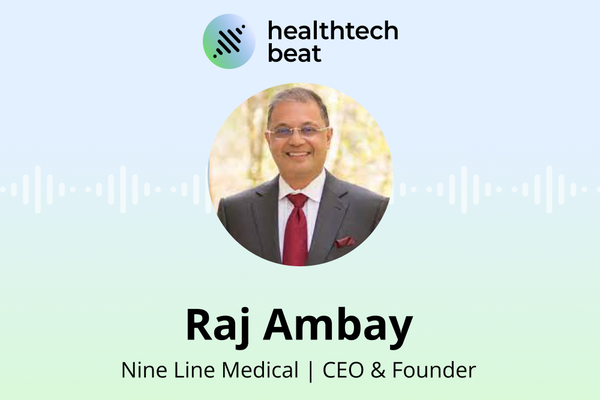Creating a healthcare MVP is different from building one for the financial, hospitality, or other industries. Like any medical solution, a healthcare MVP can directly impact the well-being of patients or affect the care providers deliver. That’s why there are dozens of requirements, regulations, and considerations to plan for.
Though hard to pull off, the healthcare MVP development process can be a success, like with GapNurse. Demigos has been honored to build this staffing platform. This experience has helped us identify the best practices for healthcare startups, and we’re here to share them right now.
Want to release a medical MVP that’s ready to bring in some feedback and add to the development of your final product? You’ll need to take stock of everything you know about MVPs and probably upgrade your knowledge with new practices explained in this article.
Benefits of developing an MVP for healthcare products

Imagine you’re developing a new medicine. You can’t just put ingredients together, encapsulate them, and bring a “newly created” drug to the pharmacy’s shelves. It must be tested with laboratory experiments and clinical trials to see whether the results are promising enough to keep developing the medicine. And all this may take years.
Building an MVP product for healthcare software is like running clinical trials. It’s a way to test the feasibility of your solution, the effectiveness of its features, and its security. And the good news is that all this only takes weeks or months, not years.
Best of all, creating an MVP has many benefits for your end product and business. It isn’t a mandatory development step, but the way it can streamline your project and minimize risks makes it a smart one to follow.
Pitching to investors
If your healthcare project is still short on funding, it may be tempting to leave out MVP development in an attempt to save. But that may be a big mistake.
By creating a simple yet tangible version of your product, you can:
-
Showcase why it’s going to generate a buzz when it’s fully developed
-
Prove you aren’t stuck at the ideation stage
-
Win over new investors
It’s worth building an MVP for healthcare startups struggling with all those company setup costs. In fact, you’re investing in proof that you’re a great investment opportunity, which pairs well with defining your market size for a winning pitch deck.
A dollar saved is a dollar earned
Do healthcare providers and patients really need those push notifications? Are you sure adding a chatbot isn’t a silly investment?
Sometimes, it’s easy to take software features too far — well beyond what is needed to make your solution usable and helpful. When you can’t stop cramming in extra features, you risk ending up with an overstretched budget.
With a healthcare MVP, you can evaluate how necessary your software features are. You can then ditch anything that is rather a nice thing to have than a critical feature for your end users’ pain points. You can notch up significant money savings by not taking such features to the final development stage.
Value and care for healthcare
Although ideation precedes healthcare MVP development, it shouldn’t end there as it can move with your software throughout its lifecycle.
A minimum viable product for a healthcare product that’s yet to be built creates wiggle room for your development process. It allows you to modify functionality based on ongoing feedback from patients, providers, medical staff, or other stakeholders. Whether they want some things simplified or added, you can respond to their needs as they emerge.
Feedback-based development makes your healthcare solutions more valuable than simply working on paper. The real-life findings you collect give you a better idea of how your end-users see your software so that you can bring them further into the implementation and development stages.
A release date is approaching
As of now, you may view your healthcare software release as something that’s yet to happen in the days to come. But today is a better way to plan for it.
With a healthcare MVP, you can circle the earliest possible release date on your calendar as it helps you:
-
Hit the market and increase awareness without a fully developed product
-
Evaluate the product-market fit of your healthcare solution with real-life use cases
-
Refine it as you receive feedback and target new users
-
Cut down the development time to turn your MVP into a fully-featured solution
An MVP makes your presence felt on the healthcare market while you’re still testing the waters and working on your service or product. When your customers know you’re around, you can save time acquiring users for your geriatric care, health monitoring, telemedicine, or other software.
How to build an MVP for a healthcare startup

Plenty of ink has been spilled about building MVPs, but you can’t just map your prior knowledge onto creating an MVP for healthcare. Despite the same basic steps, an MVP for a medical solution requires additional steps to avoid failure with your MVP.
Several factors are crucial for the MVP development process for healthcare products. One is to define all the regulatory requirements that need to be met.
Getting started with requirements
Chances are, you’re well aware of the importance of knowing who you’re developing your software for and who you’re going to compete with. Let your discovery stage be more insightful.
Healthcare requirements are sure to creep into MVP development for healthcare platforms. Depending on where and how your software will be used, you may need to build it for HIPAA, DPA, GDPR, or other standards. To clarify the requirements to be met, you should:
-
Check with your local authorities and compliance laws
-
Identify specific regulations for access control, data management, encryption, etc.
-
Find a vendor that can build your software for 100% compliance
You can also arrange third-party audits after your medical MVP is created to ensure you can roll it out without the risk of fines. But that’s a topic for another day.
Planning
Planning is an “umbrella” step of creating a healthcare MVP. In fact, it’s a bunch of steps that take you from defining workflows to creating a new tab in your budget spreadsheet to plan for them.
Here you’ll need to map out a product journey, user personas, and must-have MVP features. Planning for them early in the development process can help build a better healthcare MVP and minimize rework as it’s validated.
When choosing features to add to your healthcare MVP, you can use the Kano prioritization model. The rule of thumb is to weed out fancy and expensive features and only go with the basic functionality that’s easy to develop, test, and iterate on. After all, the aim is to create a minimum viable product, not a maximum viable product.
Building a tech stack and designing features
Before actually building something, you need to choose what technology you’ll use to build it. In the healthcare industry, this boils down to what technology is best for compliance.
A perfect tech stack for the healthcare MVP development process should bolster data security by default. It should rule out vulnerabilities on the back-end side so that your MVP is safe from cyber threats and other risks.
Ideally, your tech stack would be built for scalability and ease of iteration. The technologies that ensure both can make your MVP a pleasure to use for your customers while your developers keep improving it in response to their feedback. That’s why cloud technology can be great for almost any healthcare MVP or full-fledged product.
You don’t have to hold a Ph.D. in technology management to put together a regulations-friendly tech stack. Your software vendor can create it for you after analyzing your business requirements, the product to be built, and features. If you’re good with the tech stack provided by your vendor, they will then design all the features and bring them out.
Collecting feedback and moving on
An MVP is an insightful testing ground. When it’s rolled out, each of your MVP’s features should be tested with user groups.
That’s when you need to bring your MVP to providers, patients, or other user groups you’re trying to serve. It’s important to set up a bias-free feedback gateway so that all end users can reflect on your product, including what they love and hate about it.
Leave iterative enhancements to your vendor. When enough feedback is collected, they will improve your healthcare MVP technically and develop other features of your main solution.
The breakdown of healthcare MVP development costs

There isn’t one price that can be quoted for an MVP. While it may sometimes be as low as $3,000 for an appointment scheduling application, it may go up to $30,000 for an EHR platform or other complex product.
MVP development costs need to be assessed on a case-by-case basis. That’s because all too many things can affect them, and it’s impossible to determine these things without going deep into your business needs.
But you should be aware of the most common factors that will surely impact your final quote:
-
What exactly you’re creating. A simple prototype is cheaper to build than an MVP for a cross-platform mobile app. So the more complex your MVP is, the costlier it is to develop, test, and launch it.
-
How you’re creating it. There are many ways to create one and the same thing. Go lean, and you can save on MVP development by cutting off inefficient processes and features. Should you decide to flaunt all the features of your would-be product in your MVP, get ready to pay more for it.
-
Who is creating it. If you choose to build a minimum viable product for a healthcare product on your own, you will likely need to cover more in overhead costs and hourly paychecks than going down the outsourcing route. That’s especially true if you’re gathering a team in the USA or European countries.
Outsourcing can be a thrifty way to develop your medical MVP. There’s a yawning difference between the average salaries of software engineers and product managers in the USA and in countries with less bloated economies like Ukraine. What may cost you $96,000 and up for just one of Uncle Sam’s specialists can be half as much for a Ukrainian professional.
Most importantly, Ukraine is prized for its developers. So your savings shouldn’t impact the quality of your healthcare MVP.
Data security compliance for healthcare MVPs

With a worryingly high number of data breaches, the importance of data security in healthcare software is paramount. Not only that, but it’s legally required even for MVPs.
Many laws and regulations govern how healthcare apps collect, store, and disclose data. You need to ensure compliance when creating an MVP, which means building a fail-proof infrastructure, implementing authorization and encryption, introducing a backup plan, and taking other measures for safe data circulation.
What regulations your MVP must comply with will depend on where you’re rolling it out. Here are the most widely used data security standards:
-
HIPAA. Your MVP must comply with HIPAA rules if you’re targeting the USA market. They oversee the use of medical data at the federal level.
-
GDPR. Any healthcare software that uses sensitive data in the EU must meet GDPR requirements for collecting, sharing, storing, and transferring data.
-
DPA. If you’re about to create a healthcare mobile app minimum viable product for UK-based companies or patients, it must comply with the Data Protection Act.
-
PIPEDA.The requirements described in this act are a must for you if your MVP is brought to the Canadian market.
-
Australian Privacy Act. Any MVP is destined to fail in Australia if it runs afoul of the Privacy Act and its data security standards.
-
New Zealand’s Privacy Act. New Zealand has recently updated its data collection and sharing rules with new requirements to meet in the Privacy Act 2020.
Healthcare data regulations can also differ locally (California’s CCPA, British Columbia’s PIPA, etc.) or depending on what medical systems your MVP fetches data from. For example, your MVP must comply with the UK’s NHS rules if it uses health records from NHS systems.
Healthcare MVP challenges you may encounter

Challenges are a part of the process. But letting them control your MVP development can result in failure.
Here’s why some healthcare MVPs never mature into full-blown products.
Compliance problems
HIPAA, DPA, GDPR, and other regulations are there for a reason. If you create a healthcare MVP that violates the standards applicable in your area and for your processes, you may end up with a penalty. It can be anything from a multi-thousand-dollar fine and a ban on rolling out your MVP to a jail term.
Reckless haste
It does make sense to develop a medical MVP quickly to start collecting feedback as soon as possible. But not all practices are good for expediting the process. If you choose to cut corners on conducting a market analysis or proving your concept, your healthcare MVP will likely fall flat.
Regrettable technology decisions
Technology can bring your MVP’s features to life and give you plenty of room for improvement. However, technology can also put a cap on your product’s growth, scalability, and usability. The difference between what’s right and wrong for your healthcare MVP may not be that obvious, so you need to join hands with a technology partner.
Cyber threats
Healthcare apps and devices attract cyber attacks like flowers attract bees. Even if it’s only an MVP, hackers and other unauthorized users may try to exploit its shortcomings for personal gain. That’s why incorporating multi-level authentication and verification technology and creating a mitigation plan is crucial for any medical MVP to fight off cyber challenges.
Fear of failure
Some things may go wrong, and some features of your MVP may prove to be useless. But it’s okay to fail as long as you treat your failure as an insightful experience. MVP development is where you can still adjust your product to the emerging needs of patients or providers. Don’t let fear of failure make you want to give up.
Successful MVP development with Demigos
Snowed under by crippling challenges, processes, and regulations to comply with? Creating and launching a healthcare MVP with Demigos can be an easy way to avoid the stress you may be experiencing.
We specialize in building an MVP for healthcare startups, including AgeTech and healthtech companies. From mobile apps to web platforms to software for wearables, Demigos can ensure a successful and compliant MVP — large or small.
GapNurse is one of the greatest examples of healthcare MVPs we’ve created. The initial version of this cloud-based, HIPAA-compliant platform has brought in plenty of feedback from nurses and healthcare facilities, allowing for iterative development and user-centric improvements.
Whether your idea is to create a healthcare worker finder tool, an app to help seniors get better care, or a telemedicine platform, let Demigos build an MVP for it. Contact us for more information.






